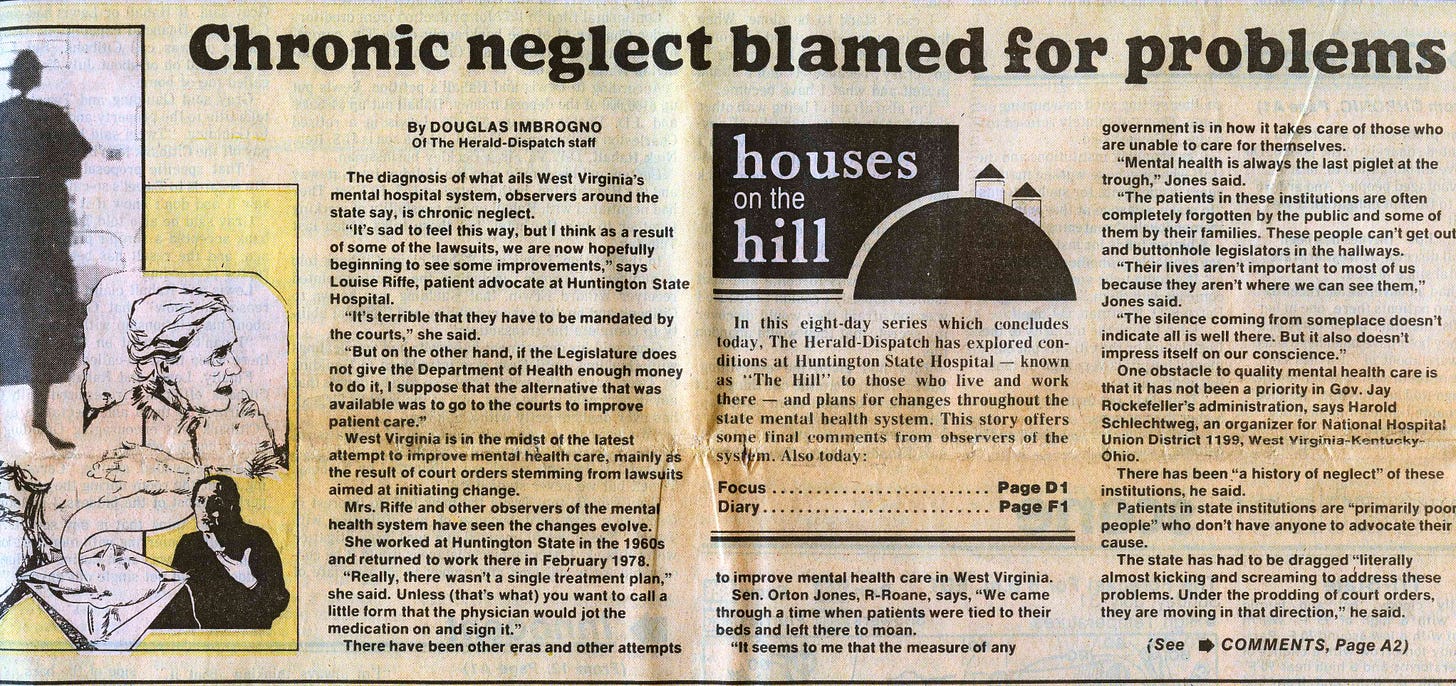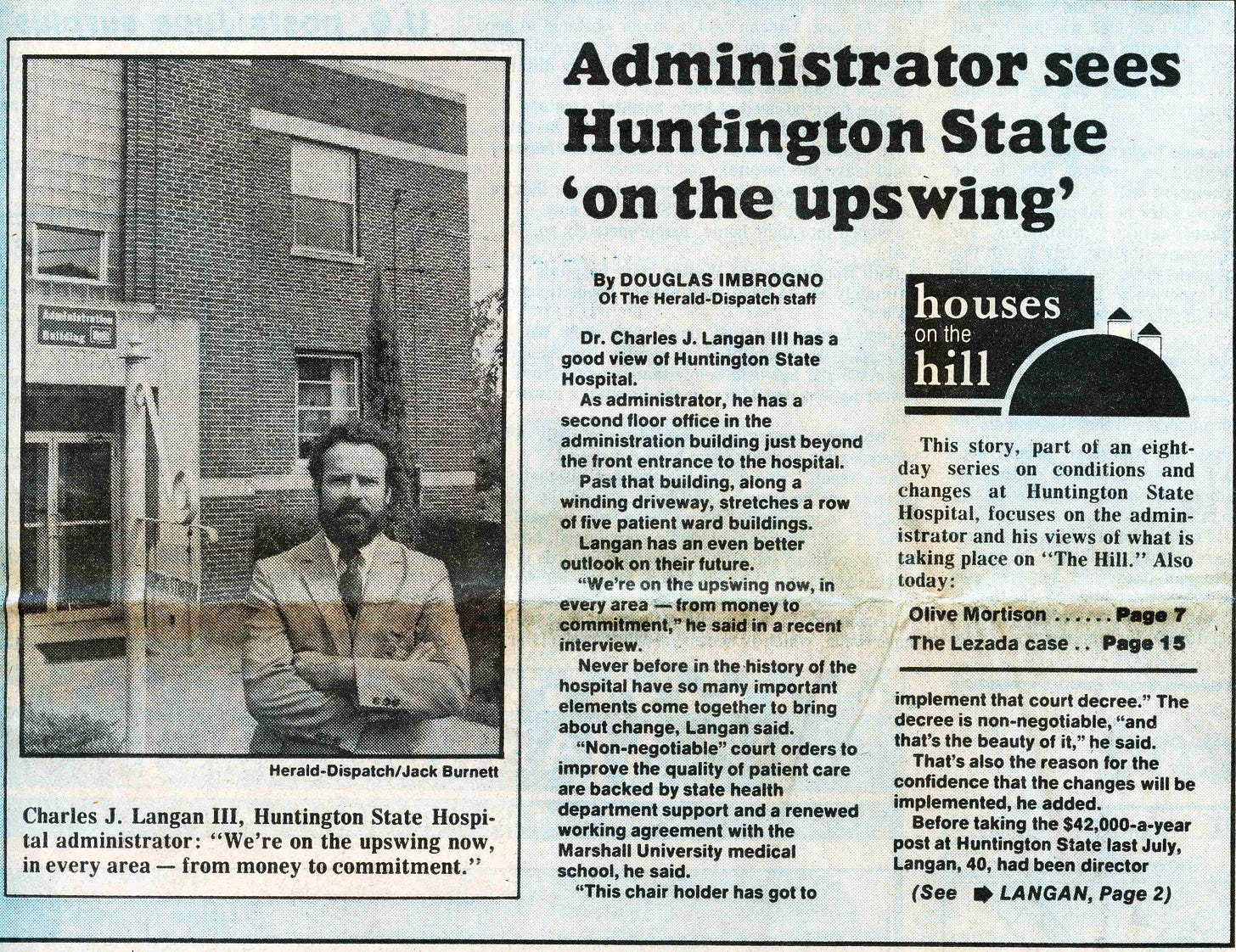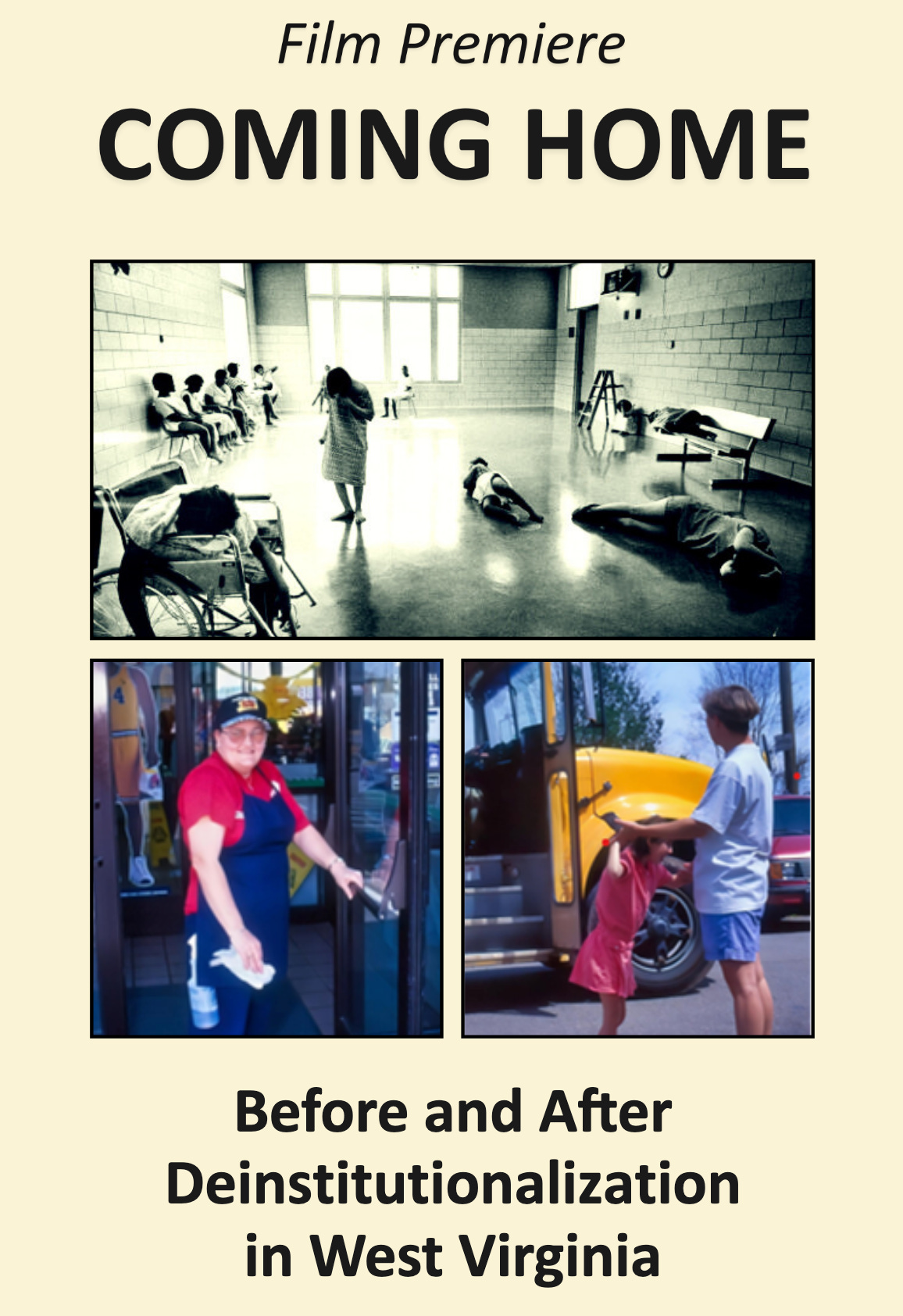WORKING the WARDS | Part 3
'Half of them don't belong here,' the Huntington State Hospital aide says of the patients. | June 4, 2025
WORKING the WARDS | Part 1 | June 2, 2025
WORKING the WARDS | Part 2 | June 3, 2025
WORKING the WARDS | Part 3 | June 4, 2025
By Douglas John Imbrogno | June 2, 2025 | If you’re in striking distance of West Virginia’s capital city of Charleston on Thursday, June 5, catch the premiere of a documentary I produced with Bobby Lee Messer titled "COMING HOME: Before and After Deinstitutionalization in West Virginia." Produced in conjunction with the Developmental Disabilities Council of West Virginia, the 33-minute film takes a close, hard look at the often brutal and inhumane conditions inside West Virginia’s mental institutions. It examines the years-long efforts by advocates to return those behind walls and locked doors to their homes and communities, wherever possible. (See more about the film in Part 1). In 1983, as a young reporter for the Huntington Herald-Dispatch, I researched and wrote a week-long series on this massive reform effort, called ‘HOUSES ON THE HILL.’ To get a first-hand glimpse of life on back wards, I worked undercover as a volunteer at Huntington State Hospital for nearly three months, publishing a diary as part of the series about what I witnessed. Below are final excerpts from those diaries.
Register at this link to attend the free premiere of the ‘COMING HOME’ documentary Thursday, June 5, 2025, from 6 to 8 p.m. (doors open 5:30 p.m.) at the Culture Center in the state Capitol Complex in Charleston, W.Va., or show up at the door. VIEW THE TRAILER here.
A NOTE ABOUT THESE EXCERPTS: I have retained the original diaries’ language usage from a previous day, such as the no longer condoned phrase ‘mentally retarded’, among others. I have also made some light formatting and editing changes for ease of reading online.
MAY 20
“We need volunteers everywhere,” says Florence, the Huntington State Hospital coordinator.
I have asked if I could work in Ward 1, where physically handicapped patients are housed. We go there. Behind its doors, a bony, child-like patient stands naked in the long narrow ward. One jabbering patient lolls in a wheelchair tied by a strap to the wall.
In the locked nursing station, an elderly aide prepares medicine. A younger aide sits, wearing a t-shirt that says ‘Have a Coke and a smile.’
Later, I sit at a table in a day room, a sorry assemblage of patients in wheelchairs ringing the walls. I feel a touch at my side. Beside me on the floor kneels a patient on his hands and knees. His gown barely conceals his nakedness. He inches closer, an unlit cigarette projecting from his mouth. He wrinkles his face into a smile.
The two aides appear, wheeling the medicine cart into the room. Patient to patient they go, cocking heads, inserting pills, pouring medicine into mouths. The kneeling patient is in the way and they tell him to move. The man, who appears heavily drugged, inches in slow motion back to his chair across the floor while the aides nudge the cart forward at his feet and repeat the warning.
“There’s a low patient population here. But they’re a mess—the patients.” ~ a hospital aide
MAY 24
Patient crowd in the downstairs activity room in the recreation hall. They sit in chairs against the wall, sleep at tables, play cards, smoke incessantly, drink instant coffee made from hot tap water.
I sit down at a long table.
“Here, volunteer. Hold this,” a young woman says.
She comes up and thrusts a plastic cup of coffee across the table. Another patient’s hands aren’t far behind. The patient, Peter, from the mentally retarded men’s ward, latches onto the cup. I try to pull it away from him. He strains backward with all his might. The girl delivers a quick karate chop to his back. Once. Twice.
Peter pulls the cup to his face, swallowing its contents in two gulps, spilling some on himself. Another patient pulls him backward and toward the door. Peter spots another cup of coffee. He gropes towards it, but a strong young patient catches him and twirls him around.
“You sit right there,” says an aide who has been sitting near the door.
“Peter the coffee thief,” the aide says. “He’ll drink it scalding hot. He’s been like that for years.”
She says she wishes there were enough workers to deal with behavior like that, maybe use behavior modification to break Peter’s habit.

MAY 25
Smoking hours have been posted on the men’s ward, a new regulation. An older aide who I’ve not seen before is on the ward today. She seems to want to get this milling group of patients on the move.
I see her later outside as I lead an entourage of patients, including Daniel, who has been transferred from another ward as part of the hospital reorganization. Daniel is more of a behavior problem for his mother than anything else, the aide says. He may suffer from slight retardation, but he’s really at the hospital because his mother can’t handle him, not because of any serious mental disability, she says.
Daniel is like numerous patients at Huntington State Hospital, she says. “Half of them don’t belong here.”
She says the hospital population is far below what it was about a decade ago when more than 1,000 patients lived on The Hill, as patients and staff call the hospital.
“There’s a low patient population here. But they’re a mess—the patients.”
MAY 27
Ward 1, the handicapped patient ward, is filled with the cries and occasional screams of patients. A dwarfish, bony man crouches barefooted beside a wall near a crib in which a young man with a stunted torso lies, swathed in linen. The man in a wheelchair tied by a strap to the wall shakes violently, blubbering.
An aide comes into the room with a packet of tobacco. One patient fusses.
“Sit down and smoke,” she tells him.
“That’s all we can do in here,” a nearby patient in a wheelchair says.

MAY 28
A newly-dug garden runs all along a fence beside Unit 2. A similar garden was just completed at the other end of the grounds and now shows off petunias. The hospital is gussying itself up.
Rec hall is crowded, the downstairs game room full of tobacco smoke. Bobby from one of the men’s ward is there. He sports a black left eye that looks like purple eye shadow. Two other patients—two women—have black eyes. Above one of the bruised eyes runs a row of black stitches.
A hospital aide sits at a table. She tells me she has worked six years at the hospital.
“You don’t smoke,” she says. “I didn’t either until I came here to work. Now, I’m a caffeine and nicotine addict.”
JUNE 1
A brown-haired patient with a shock of albino hair crouches in a chair on a ward, naked except for the white sock and tennis shoes he wears.
Daniel stands beside the nursing station.
“How ya’ doin’, buddy?”
Another patient wanders into the station. He has many old scars and scabs on his arms and fresh sores on his head. He raises an arm is if to strike out.
“Don’t you do that!” an aide yells. “You just try!”
The patient darts out. The aide pursues and confronts him as he slips to the floor between two chairs.
“Get up off that floor. Sit in that chair!”
Slowly, the patient rises and dumps himself in a chair.
“You be a good boy,” she says, standing over him.
WORKING the WARDS | Part 1 | June 2, 2025
WORKING the WARDS | Part 2 | June 3, 2025
WORKING the WARDS | Part 3 | June 4, 2025
CLICK TO VIEW THE TRAILER for the ‘COMING HOME’ Documentary:



